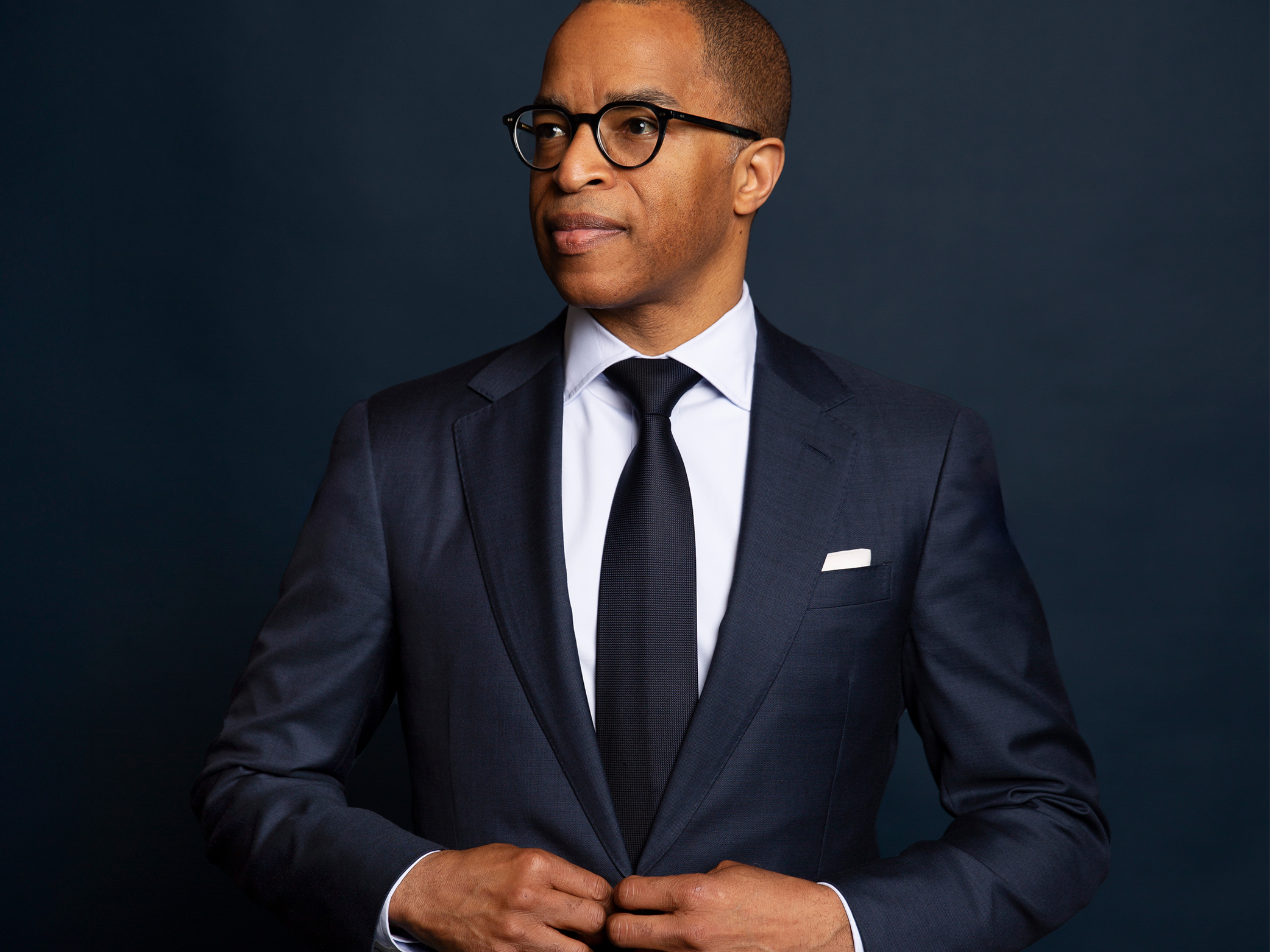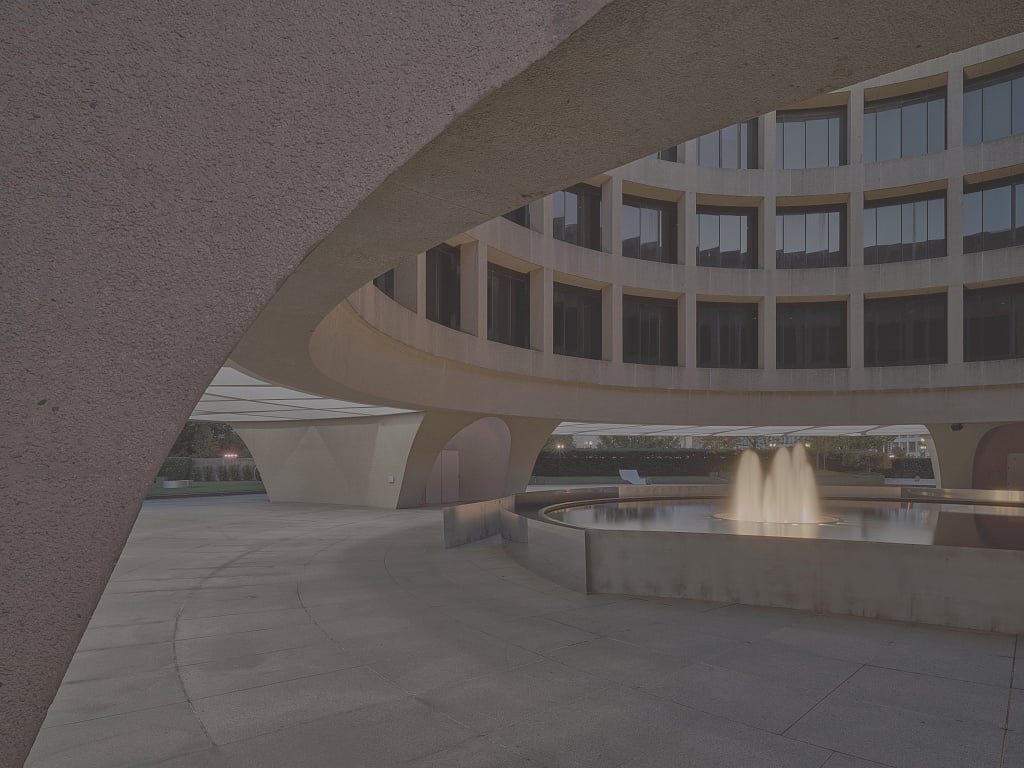If you ask Jonathon Heyward how his new gig is going, he’ll reply, “Which one?” An entirely fair answer from a guy who in the last few years has become conductor for both the Nordwestdeutsche Philharmonie in Germany and Lincoln Center’s summer orchestra in New York. But the job we’re most interested in is the one closest to DC: Heyward is now in his first season as music director of the Baltimore Symphony Orchestra, which performs at Strathmore in North Bethesda as well as in Charm City.
Heyward succeeds Marin Alsop, who became an international star during her 14 years at the BSO, and he’s already attracting attention himself. He’s the first Black conductor of a major US orchestra. He’s also young (only 31!) and, like Alsop with her cuffs, has a sartorial trademark: the Converse Chuck Taylor high-tops he wears for performances. Despite the English accent he’s acquired over more than a decade living in the UK, Heyward grew up in South Carolina and is passionate about American composers. At a splashy debut at Lincoln Center last summer, he augmented an appearance by violin star Joshua Bell with works by the Black American composers Carlos Simon and Florence Price. Heyward’s performance, which won him three standing ovations, prompted the Financial Times critic to exclaim that “Baltimore is in for an adventure.”
Heyward made his Strathmore debut with the BSO in September, and residents of our area will get their next chance to see him in action in March, when he conducts Orff’s Carmina Burana alongside the University of Maryland Concert Choir and the Maryland State Boychoir. We spoke on Zoom just after he finished a concert in Milan with his German orchestra.
It’s unusual for orchestras to be based in two different metropolitan areas. How do you plan to program for the BSO’s two homes?
I’ve had a year [since getting hired] to really hunker down and find out what the community needs from us. That’s in both our homes, at Strathmore and, of course, in Baltimore proper. The importance of having our second home in Strathmore—for the first time ever, the BSO did a gala in Strathmore, which I think was so important. It’s made for a really exciting start to what I think—to what I know—is going to be an exciting five-year tenure.
What were you hearing during those community conversations? What did you discover that people currently expect and want from the Baltimore Symphony Orchestra?
The consistent idea and concept was the idea of relatability, and how we can strive programmatically, experience-wise, to really relate to the community. The second you walk into either Strathmore or the Meyerhoff [Symphony Hall in Baltimore], you’re in for a full night of an artistic experience, particularly with “Afterwards With Heyward,” which is a series that happens after performances where I have a musician from the orchestra and/or a composer, a guest artist, discussing how we put together this program and getting to the nuts and bolts of how we, as creatives, work and why we put on different programs. For me, that’s about breaking this barrier between the musicians and the audiences.
I don’t want the symphonic tradition to be a dying art form. I don’t want it to be an art form where people feel like it’s only for certain types of people. Because it’s not. I mean, my story is sort of a testament to that.
Right, you grew up in South Carolina with parents who weren’t even into classical music. You didn’t start playing cello until you were ten, which is a little old for a serious musician. But actually, what I really want to know is: As someone from Charleston, what are your thoughts on the Bravo reality show Southern Charm?
I watched one or two episodes.
It’s about the exploits of heirs to Southern fortunes, which I don’t get the sense was your experience living there as the son of people whose job was running a diner.
Not quite.
I don’t want the symphonic tradition to be an art form people feel is only for certain types of people. Because it’s not. My story is a testament to that.
What was your relationship with the city of Baltimore before you arrived here?
I did the circuit of conservatory auditions as a cellist, and one thing I’ve historically admired here is the amazing tradition of artistic excellence in the orchestra. We’ve had so many previous music directors that have had an international sort of captivation and have put their stamp on the orchestra. As far as the DC and Baltimore areas, I am certainly getting to know them.
This season was already partly planned when you took over as music director. Have you begun to sketch out the next few years of programming at this point? Where do you think you might want to take the orchestra?
Well, of course, there are some elements of the [current] season that aren’t 100 percent the Heyward season. The journey I want to take us on comes from authentic artistic output. We are making James Lee III our composer in residence for the next season, which is a thrill because he’s a gem in Baltimore. [Lee, whose pieces have been performed by a number of prominent orchestras, teaches at Morgan State University.] We were able to kick-start our season with his piece Amer’ican, which has been an amazing success. Continuing these intentional collaborations with great artists in the area is something you should certainly expect to see.
The artist in residence is [soprano] Christine Goerke, which I had a huge say in. She’s not only a dear friend but also an amazing artist our audience has seen many, many times before. So keeping this higher artistic excellence from beyond Baltimore, but also reminding ourselves that we have incredible talent within Baltimore and within the DC area that we’re looking to harness, is also a through line that will appear in many, many seasons to come.
You’ve previously done a lot of work in various parts of Europe. How does it feel to now be working with American composers and artists in the United States?
And living composers! It’s so great. In rehearsals, I can just turn around to James and say, “What do you think of this?” It’s an incredible sense of collaboration and really fun.

Yeah, you won’t be getting much of that when you’re conducting, say, Brahms.
You’re right, I will have to rely on letters and interpretations. It’s fascinating to understand what [composers] were going through. For example, we did the Bach A-Minor Violin Concerto at this year’s gala, and before introducing the wonderful dancers from the Dance Theatre of Harlem, I told an anecdote that I don’t know if you know: Bach actually was in prison for ten days right before writing this concerto. The long story short is that the Duke of Weimar did not want Bach to leave the court. But Bach wanted to leave because he wanted another job. So the duke decided to throw him in prison. And what I love about the third movement is that it skips, in a way—it’s almost like seeing him skip away from prison. It has this wonderful sense of leaping.
You’ll be glad to hear that we no longer throw music directors into prison when they decide they want to change jobs.
That’s good to know.
Do you have any thoughts about making recordings with the BSO? Or perhaps plans to take the orchestra on the road?
Yeah, it’s all brewing. Touring and recording are a huge sort of identity stamp for an orchestra. One of the biggest things is to make sure that the foundation is strong within Baltimore and the DC area. It’s on the horizon, for sure.
I’m dying to know how comfortable Chuck Taylor sneakers are to conduct in. When I’ve worn them, I’ve been surprised by how thin the soles actually are. I don’t understand how they were sold as shoes for use playing basketball.
The thing is, in order to keep great posture as a conductor, to be able to feel the ground is really important. I do Alexander Technique [a form of therapy that teaches good posture as a key to unlock better health]. And so having shoes with no heel or soles reminds you about where your feet are.
This article appears in the January 2024 issue of Washingtonian.



















